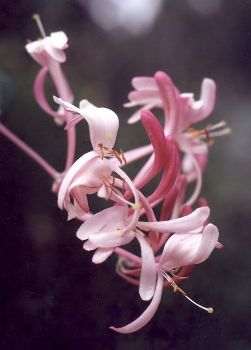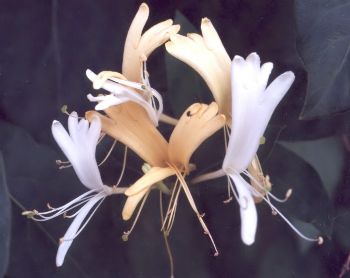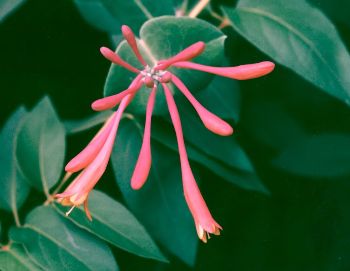Honeysuckle
by Valerie (June 20, 2000)
revised September 6, 2003


When the internet is capable of producing smells, then an article about honeysuckle will be able to do justice to this flower. Its fragrance is wonderful, especially when it can overwhelm the rather nasty smell of passionflower vines. We grow two kinds of honeysuckle: Japanese and coral. There is also a variety with pink flowers that grows in this area. It is less invasive than the Japanese plant and is called Pam's pink honeysuckle (Lonicera x americana). 
The wonderfully fragrant white blossoms of Japanese honeysuckle (Lonicera japonica) make up for its extremely invasive habit. After starting with a 6 inch sprig, we now have thick vines encompassing the compost bins and a large segment of fence. The plant sends out new shoots which seem to grow several inches every day, as well as ground runners that sneak around behind fences and through the grass. An interesting feature of the blossoms is that they start out white, then turn yellow as they age. Every so often, sections of the honeysuckle vines die and must be trimmed away. The woody stems can be rather thick, but they are soft and easily cut. When extra shoots are cut away from the main stems, the new growth is more profuse the following spring.
|
